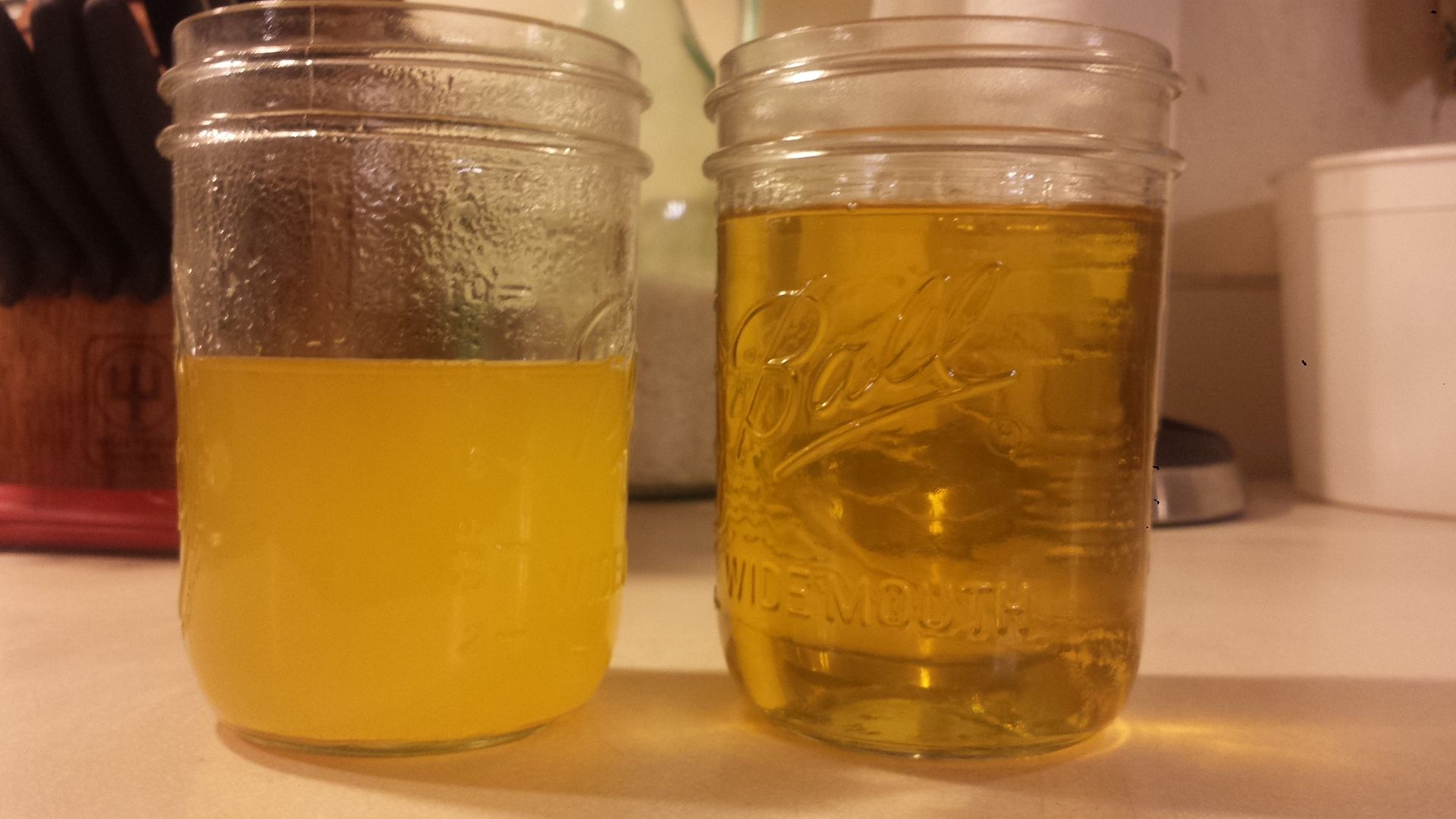Cook's Science has figured out the relationship of water and rice for Sous Vide.
The ratio is 1:1 at 200 F.
What changes is the grain.
White long grain rice is 25 minutes
Brown, Red, Black rice is 65 minutes
So I cooked my normal beans, Sous Vide and then cooked cooked two rices, long grain white and brown rice for the allotted time and mixed together with the beans.
I flavored with a Chinese spice, alcohol and oil blend that I use for Kung Pao Chicken.
The beans were meaty and the rice was al dente.
Chris
Hey everyone!
I've been reading through these forums, they are chock full of awesome information. Thank you all for taking the time to post interesting things, a day spent without learning something is a day wasted :)
Would anyone be interested in reading the Vacuum Sealer buyer's gude that I wrote a little bit ago? I'm pretty surprised by how few of my friends Sous Vide, especially since so many of them like to cook.
I wrote the guide after struggling with choosing a vacuum sealer myself...so I was hoping to help anyone in a similar situation.
I decided to try an overnight rise in a refridgerator, about 5C
Dough made up with the recipe I posted previously:
600gm strong flour,
390gm water,
10gm oil
10 gm salt
3 gm yeast
I covered the bowl with cling film and left it for about 10 hours.
The dough rose just less than double. It formed a skin, which may explain the limited rise. Perhaps I might try painting it with oil next time.
The texture was very sticky. I covered my hands with oil and divided it up into two separate lots.
I have been amazed at how nice Mucho does his beef brisket and the bark on the meat.
I used to do that but changed processes but what changed, what am I doing different today? I bought an electric smoker for convenience. So what is the difference between wood in an electric and wood in a wood or charcoal smoker?
Here is an interesting photo that I have interest in:

On the left is a 50:50 mix of canola oil and stove top clarified butter, like Chef Jacob mixes, which I really like. On the right is Glee which is what India likes makes.
The left mixture of oil on the left was used to check the oven temperature at 250 degrees F with a temperature transmitter.. The right is a picture of an oven safe kettle with the butter to kill two birds with one stone, so to speak.
Hi Chef Jacob,
If you would, please look over my shoulder and see if you can see any really big mistakes. Thanks!
I want to make a carbonated CO2 distilled water solution (3 volumes of dissolved CO2) with alcohol and salt for a AP flour and rice flour mix for a deep fry batter.
My theory is the carbonic acid, alcohol and salt will interfere with the spring action of the AP flour gluten and break the gluten into small stands. The dissolved CO2 will expand when the batter hits the oil for a light crust.
Hi Chef Jacob,
I'm thinking of trying to make a more flavorful, more tangy starter.
I'm thinking of using Bread flour, WW flour and some Rye flour... 50/25/25% - 100% hydration.
Does that mix seem correct to you. I figured I would start it at room temperature and then after it gets active I would move it to the fridge to get more acidic acid in it. Am I on the right track? Is that too much Rye flour?
Thanks for your input/help...
Wartface
Hi Chef Jacob,
My question is, have you seen a difference of adding salt with yeast at the beginning of a machine kneaded bread?
For better than forty years, I have added salt in the beginning of making a yeast bread in a machine kneaded bread to get the salt and yeast spread out through the dough.
In 2007-2008, I did a test of salt and yeast doing a bag test on a plastic bottle using a condom to look for CO2 pressure. One bottle had salt and the other did not not. The salt added seemed to create a little better pressure than without salt but this was only one test.
Looking on my sack of bread flour ingredients:
Wheat flour
ascorbic acid (dough conditioner) - this would be an oxidizer in the presents of O2.
vitamins
Doh-Tone - this is a mix of different levels of amylase and protease. Some flour use malted barley flour or you could add diastatic malt powder
Leaving out the yeast and salt at this point because of heat.
Mix the required amount of flour and water for Chef Jacob's Baguette recipe together at room temperature and do a stepped mash of the flour in the sous vide cooker.
We are doing turkey and prime rib for thanksgiving, I am trying to decide the best way to minimize my work load since there will be 40 people and a lot of dishes so less to manage is way better. I want to do the prime rib at 132F and the white meat at 142F and the dark meat at 155F, would it be better to make the meat ahead of time sous vide and then freeze (or refrigerate) and then reheat at 120F or perhaps do the white meat and prime rib together at 137F and the dark meat in the oven?